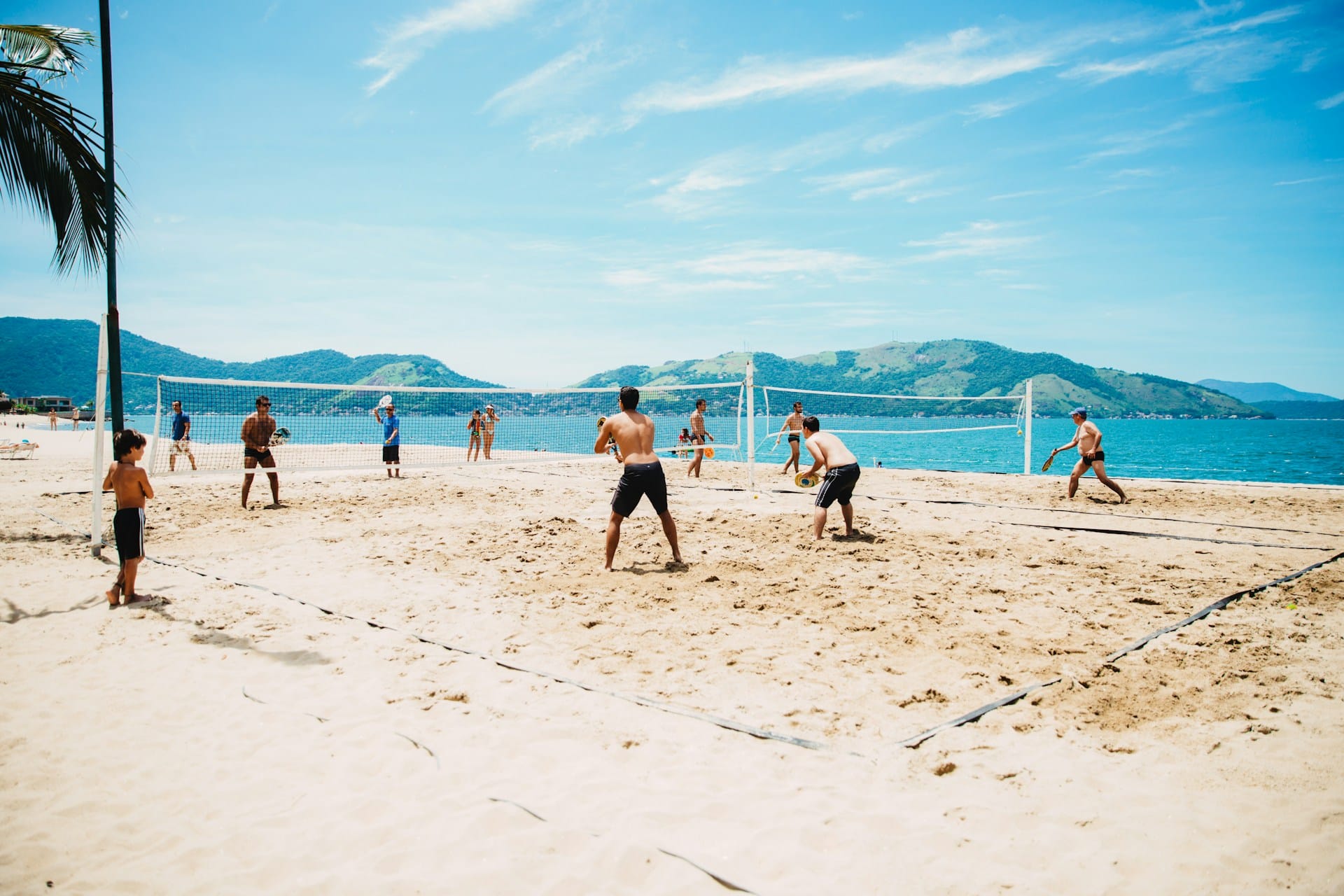How Do Elite Badminton Players Enhance Reaction Time for Lightning-Fast Volleys?

In the world of competitive sports, quick reaction times are crucial, especially in fast-paced games like badminton. For elite players, the ability to react and respond to a high-speed volley in milliseconds can make the difference between a winning and losing point. But how do these top players train their reflexes to be so quick? Let’s delve into the systems and techniques that these athletes use to enhance their reaction times on the court.
The Power of Visual Training
Visual training, a method used by many elite athletes, is at the heart of reaction speed enhancement. This training involves exercises designed to improve players’ visual acuity, eye-tracking ability, and peripheral vision.
En parallèle : What Is the Role of Acute Variable Training in Bodybuilding for Hypertrophy?
Visual training targets the ability to quickly and accurately interpret visual information. This interpretation is crucial in a game like badminton, where players need to predict the trajectory of the shuttlecock in a fraction of a second. The ability to focus on the shuttlecock, assess its speed and direction, and calculate the appropriate response all hinge on high-quality visual information.
Research published in PubMed has shown that visual training can significantly improve an athlete’s reaction time. For example, a tennis player who has undergone visual training can spot the direction of a serve earlier than a player who hasn’t received this type of training. This advantage can provide the crucial microseconds needed to return a lightning-fast volley.
Dans le meme genre : What Are the Best Methods for Increasing Reaction Time in Professional Soccer Goalkeepers?
Understanding the Game
A deep understanding of the game and its dynamics is key to improving reaction times. This understanding includes knowledge of the court’s layout, the sport’s rules, the opponent’s strategies, and the physics involved in a shuttlecock’s flight.
By studying the game, players can anticipate their opponent’s moves based on their current position, the speed and rotation of the shuttlecock, and even their body language. This predictive analysis allows players to react to shots faster, as they’ve already narrowed down the possible responses based on their understanding of the game.
For instance, if a player recognizes that their opponent’s body position and racquet angle favor a cross-court shot, they can make the necessary footwork adjustment in anticipation, resulting in a quicker response time.
Physical Conditioning and Training
Physical fitness and strength play an integral role in enhancing a player’s reaction time. Rapid response is not only about mental sharpness but also about physical ability to deliver the appropriate response quickly and accurately.
Training programs often include exercises that target specific muscle groups used in badminton. For instance, forearm and wrist exercises can improve a player’s ability to perform a quick snap of the racquet for a lightning-fast forehand volley. Meanwhile, leg workouts can enhance a player’s speed and agility on the court, allowing them to reach the shuttlecock faster.
Furthermore, agility and speed drills can train a player’s body to react quickly. These drills help the player to readjust their position on the court swiftly and efficiently, thereby improving their reaction time to volleys and smashes.
The Role of Equipment
The type of equipment a player uses can have a significant impact on their performance, including their reaction time. A racquet’s weight, balance, and string tension can alter the speed at which a player can swing and hit the shuttlecock.
Lighter racquets allow for quicker swings, enhancing a player’s reaction time. Racquets with higher string tension provide more control, allowing for precise shots. Conversely, racquets with lower tension can help generate power, providing faster returns.
Pickleball, a sport similar to badminton, also emphasizes the importance of equipment. Like badminton players, pickleball players need a lightweight, sturdy paddle to enhance their speed and control on the court.
Continuous Performance Analysis
Performance analysis is crucial to improving reaction times in badminton. This analysis involves studying a player’s performance during training and matches, with a focus on their reaction time for each shot.
Using video footage and tracking technology, coaches can pinpoint the exact moments during a game when a player’s reaction time was either commendable or in need of improvement. This feedback provides valuable insights into a player’s strengths and weaknesses, and it guides further training and development.
Performance analysis also involves studying opponents’ strategies and behaviors. This information can help players anticipate their opponents’ moves on the court, thus improving their reaction times.
By focusing on these areas – visual training, game understanding, physical conditioning, equipment usage, and performance analysis – elite badminton players can enhance their reaction times significantly. The result is an incredibly fast volley that can surprise and outpace an opponent, giving the player a competitive edge in this fast-paced sport.
Optimizing Sports Vision: Eye-Hand Coordination and Contrast Sensitivity
Enhancing eye-hand coordination is another core aspect of the elite badminton player’s training regimen. This coordination is arguably one of the most critical elements in fast-paced sports like badminton and table tennis. The ability to synchronize visual inputs with physical responses can significantly improve a player’s reaction time and the accuracy of their volleys.
Eye-hand coordination exercises may involve catching a ball thrown from different angles or tracking moving objects while maintaining balance. These exercises aim to improve the visual system’s efficiency and the speed at which the body can respond to visual stimuli.
Contrast sensitivity, another significant aspect of sports vision, deals with the ability to distinguish between objects and their background, especially in low-contrast situations. In badminton, players often have to react to a fast-moving shuttlecock against various court backgrounds. Improving contrast sensitivity can help players spot the shuttlecock quicker, thereby reducing their reaction time.
Training for contrast sensitivity often involves exercises under different lighting conditions and backgrounds, intended to simulate the varying environments a player might encounter during a game.
Technical Tactical Approach: Topspin Forehand and Handed Backhand
Badminton players adopt various technical tactical approaches, which can significantly influence their reaction time. Two such techniques are the topspin forehand and the handed backhand.
The topspin forehand is a powerful shot used to force the opponent to the back of the court. By mastering this technique, players can increase their shot speed, thus reducing the opponent’s reaction time. Moreover, a well-aimed topspin forehand forces the opponent to adopt a defensive position, providing the player with a positional advantage on the court.
The handed backhand, on the other hand, is a defensive shot that can surprise an opponent and disrupt their rhythm. When executed correctly, it can return a shuttlecock with unexpected speed and direction, thus giving the player extra time to prepare for the next shot.
To master these techniques, players often engage in repetitive drill exercises and simulated game situations. This practice not only enhances their technical skills but also improves their physical fitness and reaction time.
Conclusion: The Path to Lightning-Fast Volleys
In conclusion, the journey to developing lightning-fast volleys involves a holistic approach that addresses various aspects of a player’s performance. From visual training and a comprehensive understanding of the game to physical conditioning, equipment selection, and continuous performance analysis, each factor plays its part.
Moreover, developing specialized skills such as eye-hand coordination and contrast sensitivity, in addition to mastering technical tactical techniques like topspin forehand and handed backhand, can give players a significant edge in the highly competitive world of badminton.
The quest for faster volleys is a continuous process that requires dedication, perseverance, and willingness to adapt. The college-level and elite badminton players who have honed these techniques have demonstrated remarkable reaction times, showcasing their speed, agility, and mastery of the sport. As such, these strategies and training techniques continue to shape the future of badminton, pushing the boundaries of what is possible on the court.
